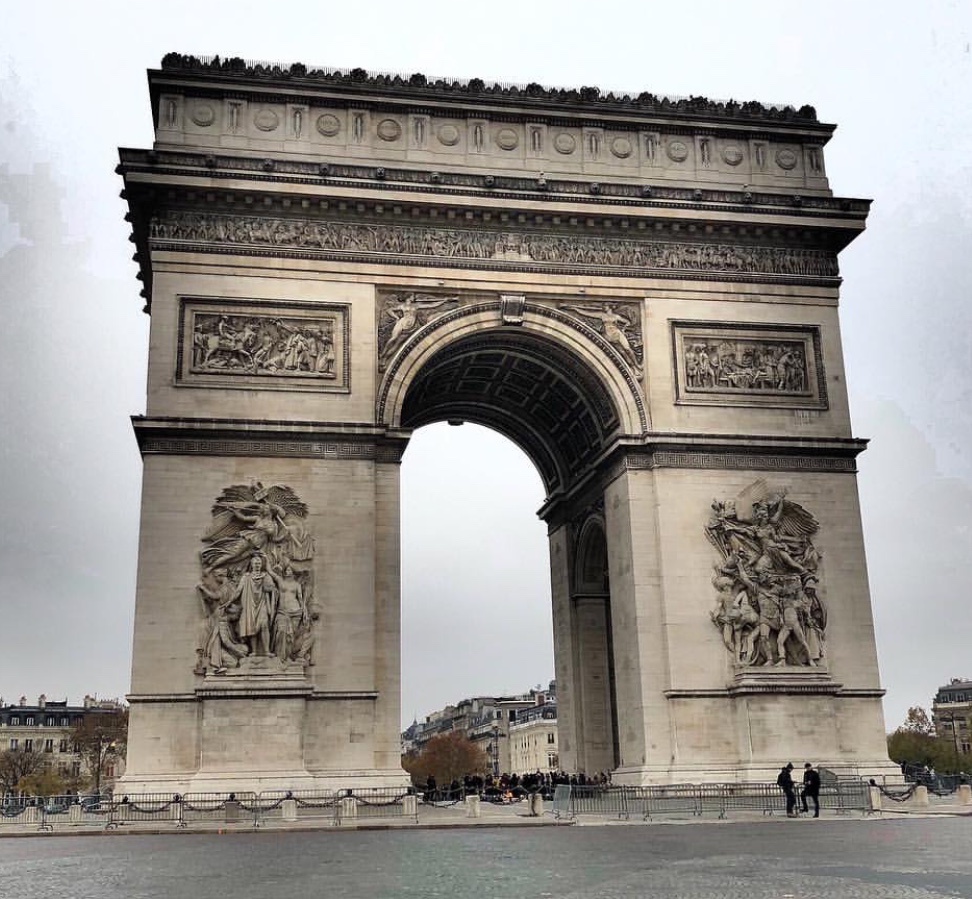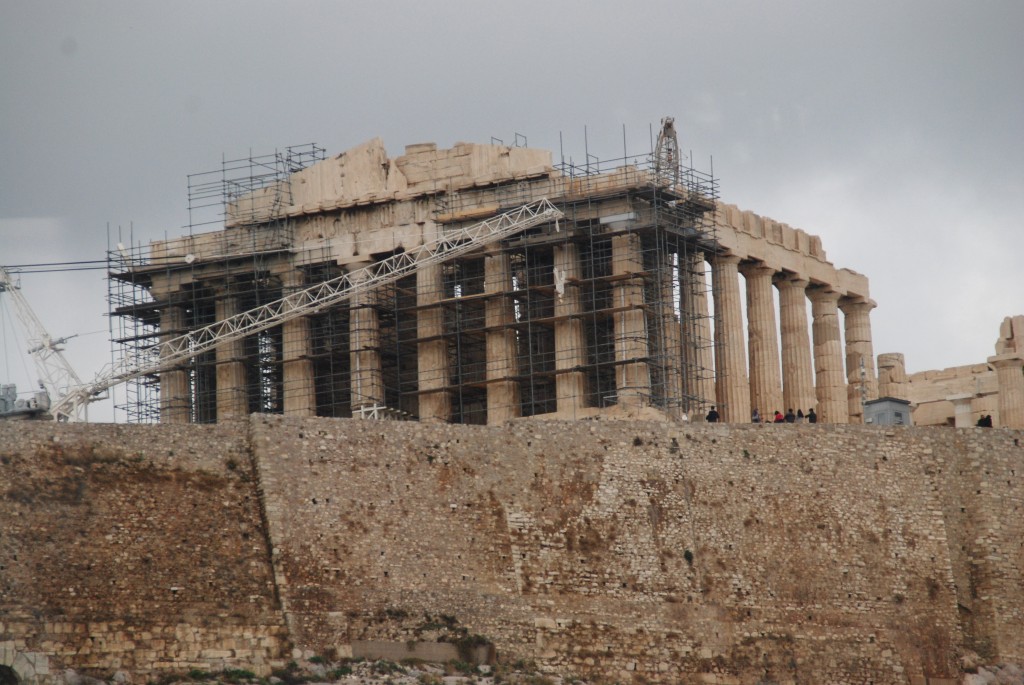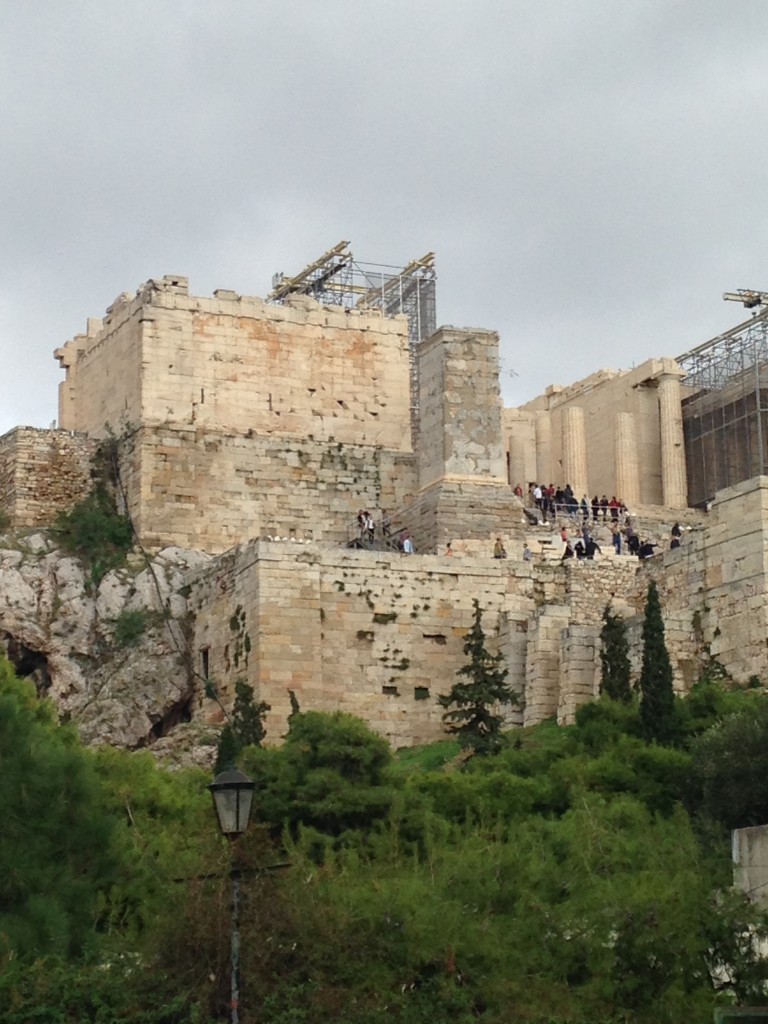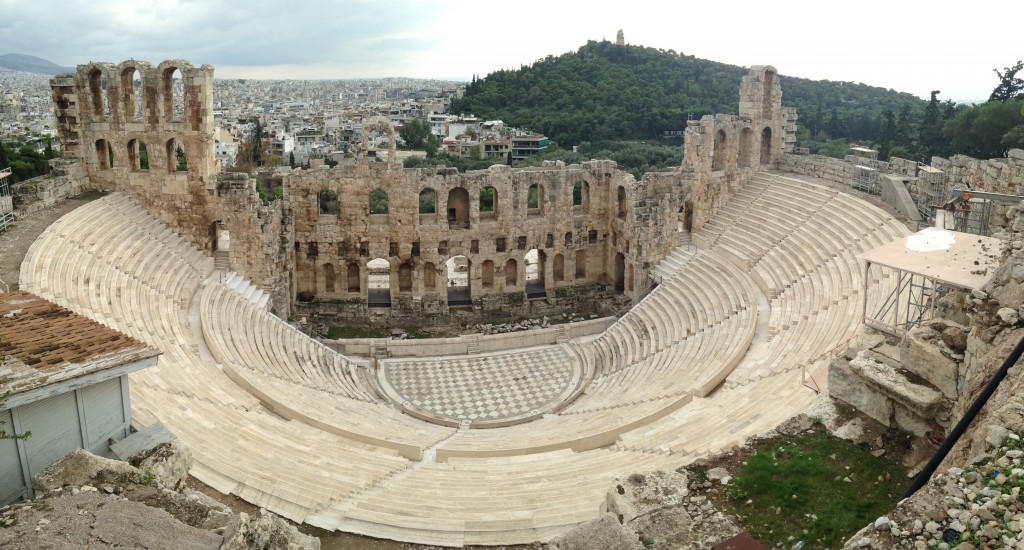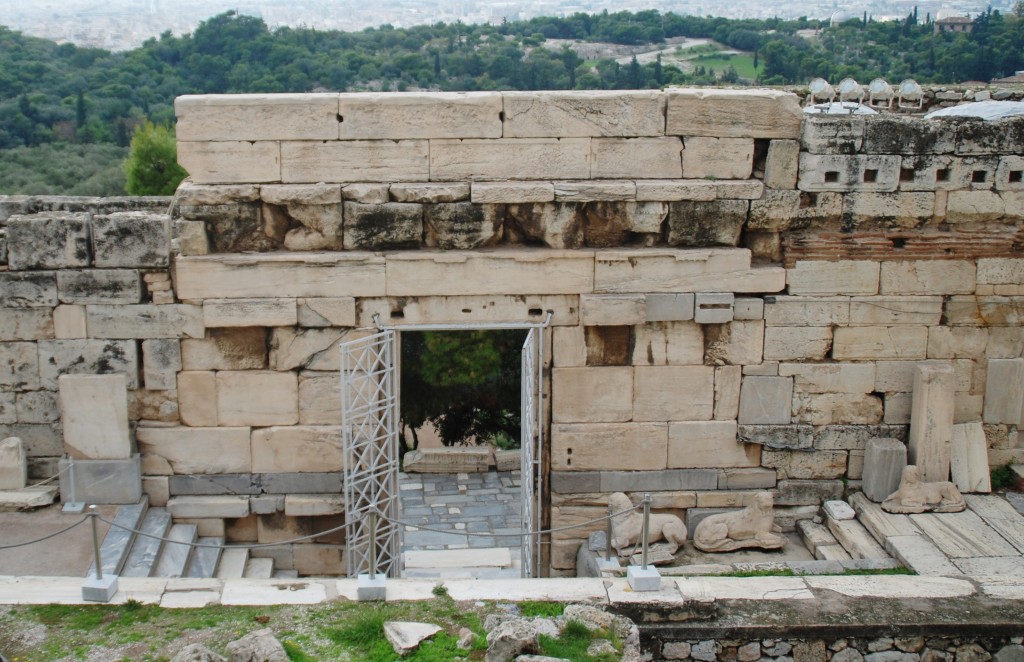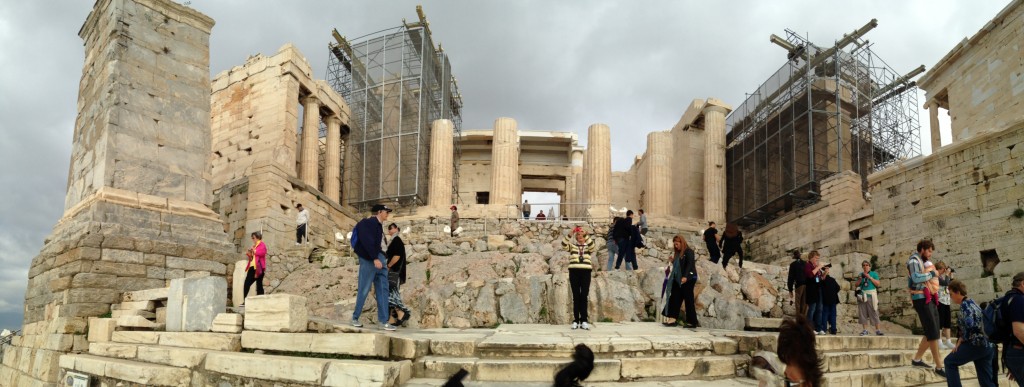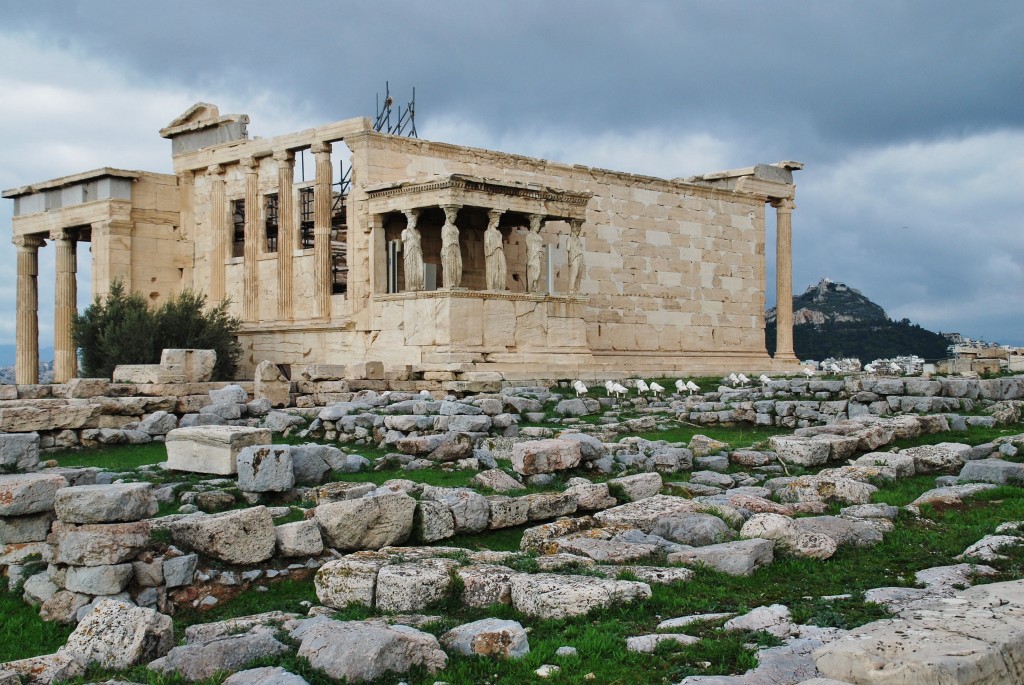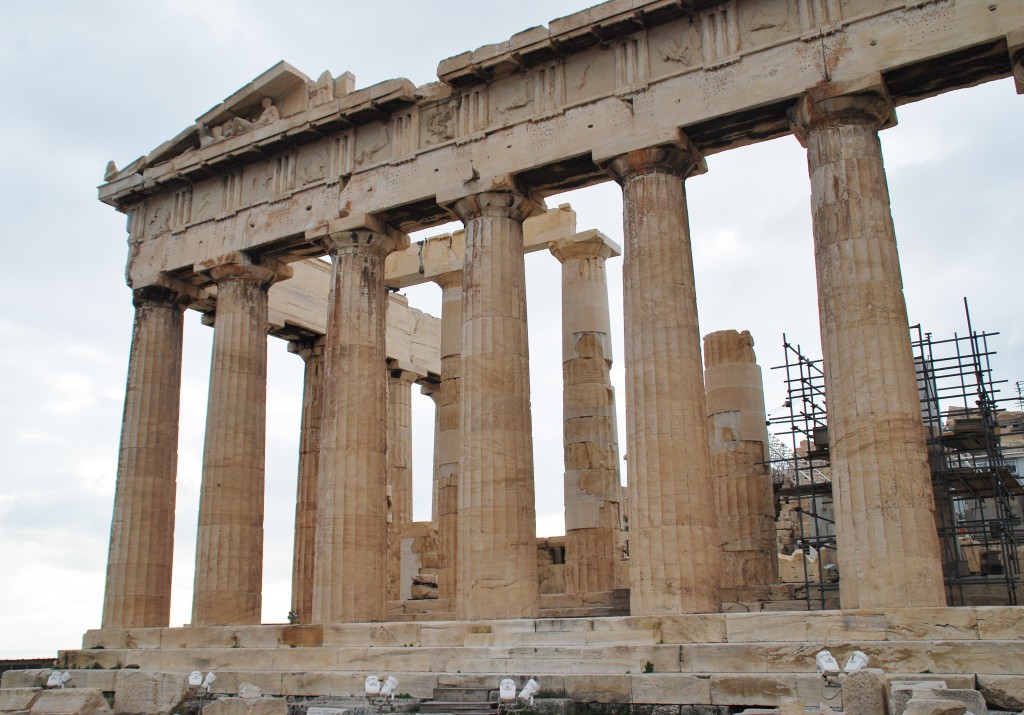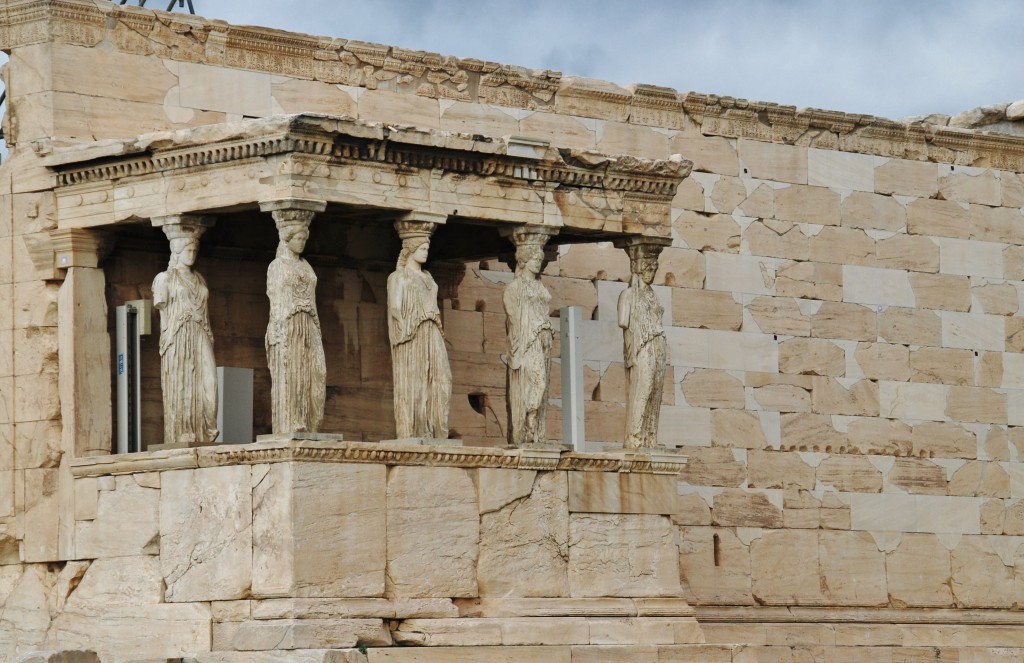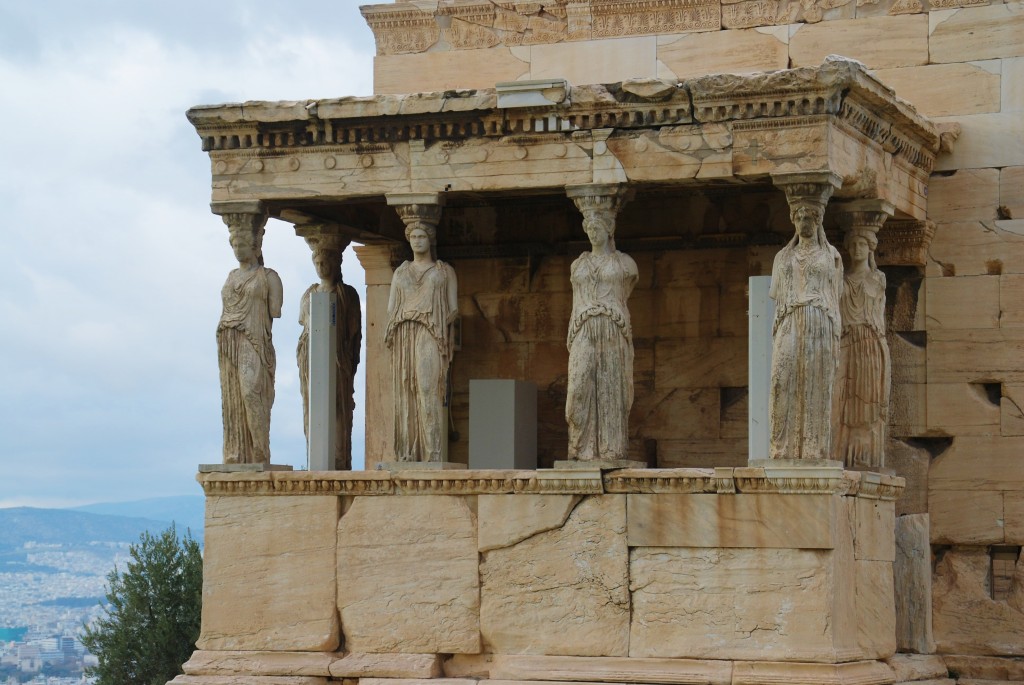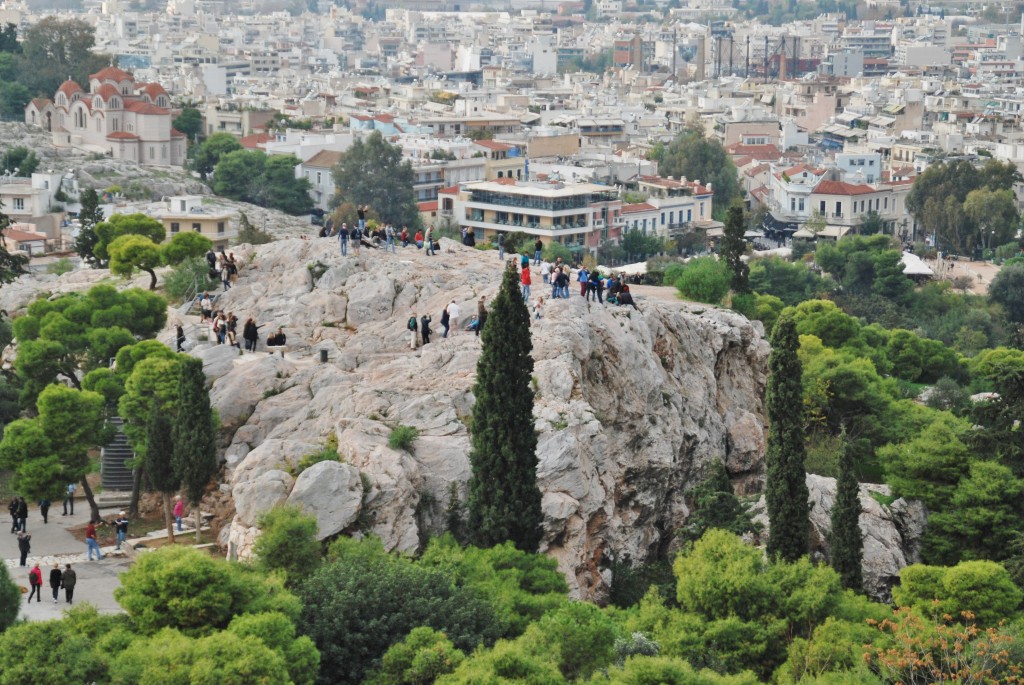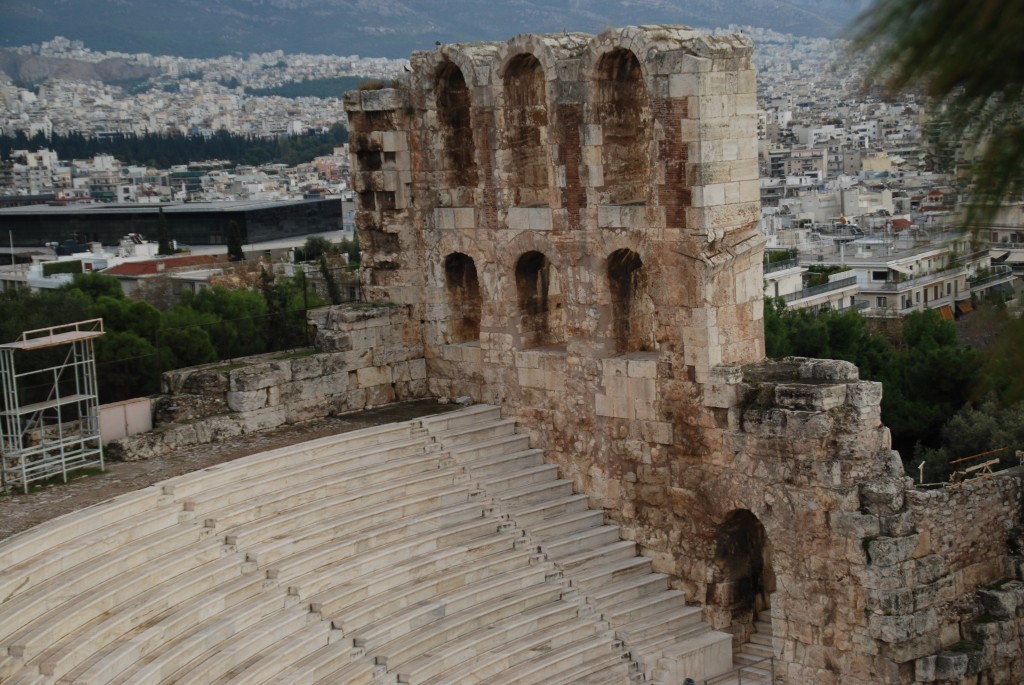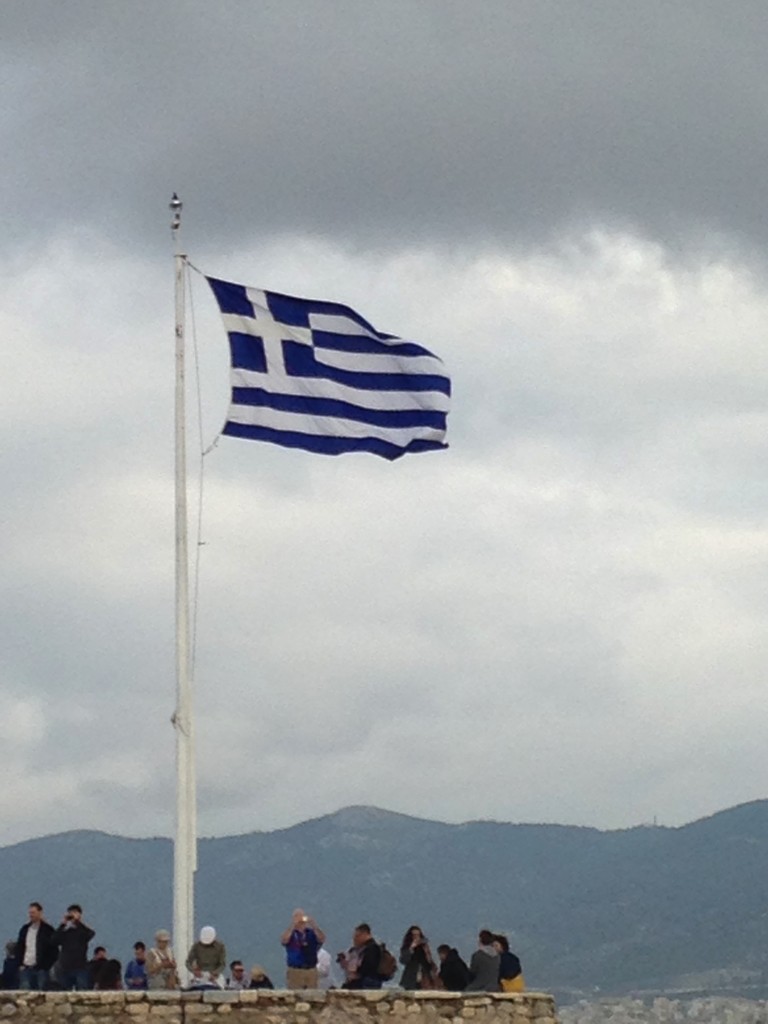We walked around the circle at the base of the Arc de Triomphe, surrounded by the chaos of traffic and the sound of automobile horns. There were inscriptions in the ground underneath the vault of the arch marking the location of the Tomb of the Unknown Soldier. Paying our respects, we happened upon the evening ceremony of the lighting of the torch. This observance of one soldier, buried here in 1921, represented the many soldiers who fought for France during the First World War.
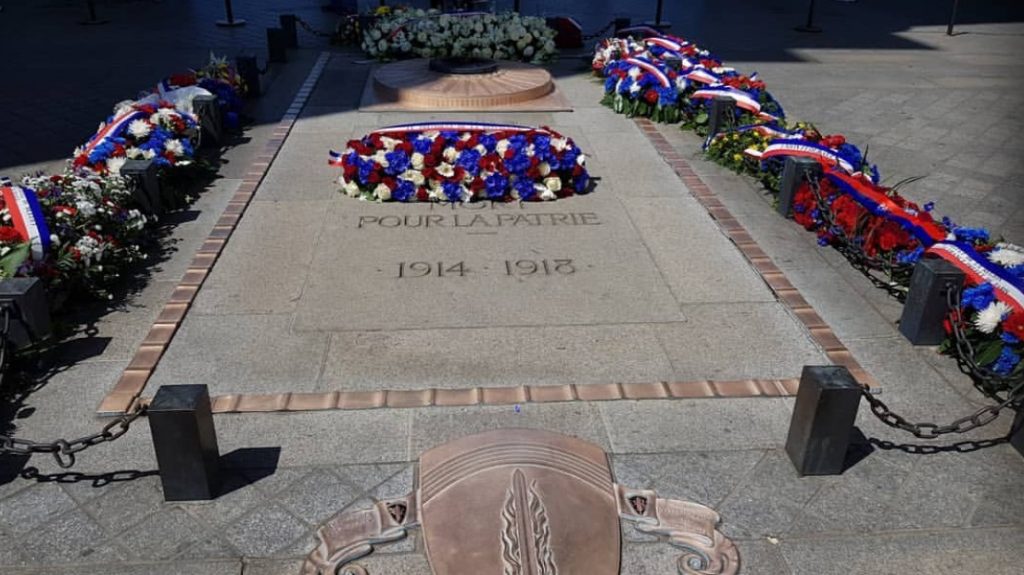
The magnificent Arc de Triomphe is a little piece of Rome that resides in the stylish city of Paris. Napoleon Bonaparte, influenced by the triumphal arches of the Roman Empire, commissioned the monument to signify his victorious battle of Austerlitz in 1805. Friezes of soldiers are ornately sculpted into the stonework while a list of Napoleonic victories and names of 558 French generals are memorialized on the inside and top of the arch. Four two-dimensional reliefs were elaborately carved into the arch, the most famous is Francois Rude’s “La Marseillaise”, which is also the title of Frances national anthem. Standing 162 feet tall, 150 feet wide at the center of the Place Charles de Gaulle, the massive size can only be experienced in person.
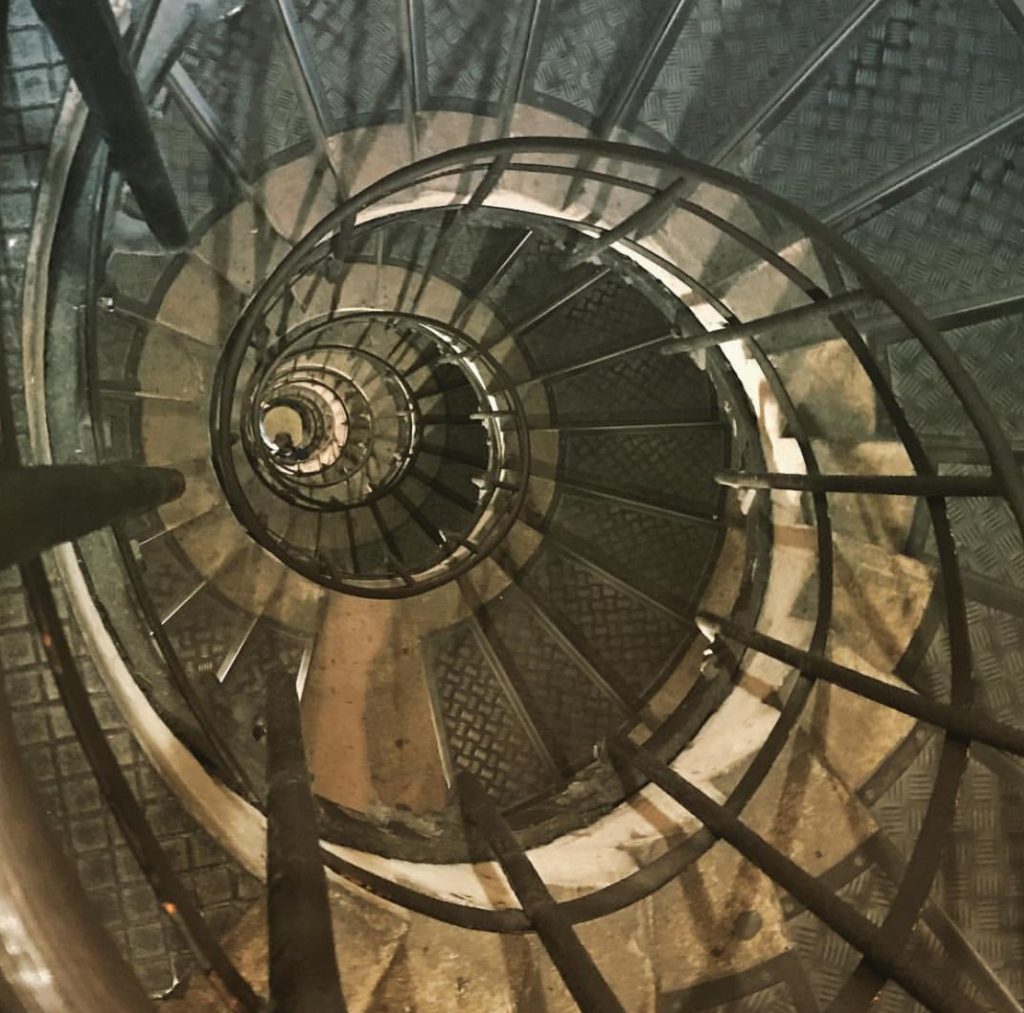
We were prepared to visit the museum and climb the 284 steps to the top of the arch for magnificent views of Paris. Purchasing our tickets in advance, we finished our exploration of the arch’s exterior and slipped into the museum to learn more about the history of the arch and mused over the enclosed miniature model. The nearby shop offers a number of great mementos.
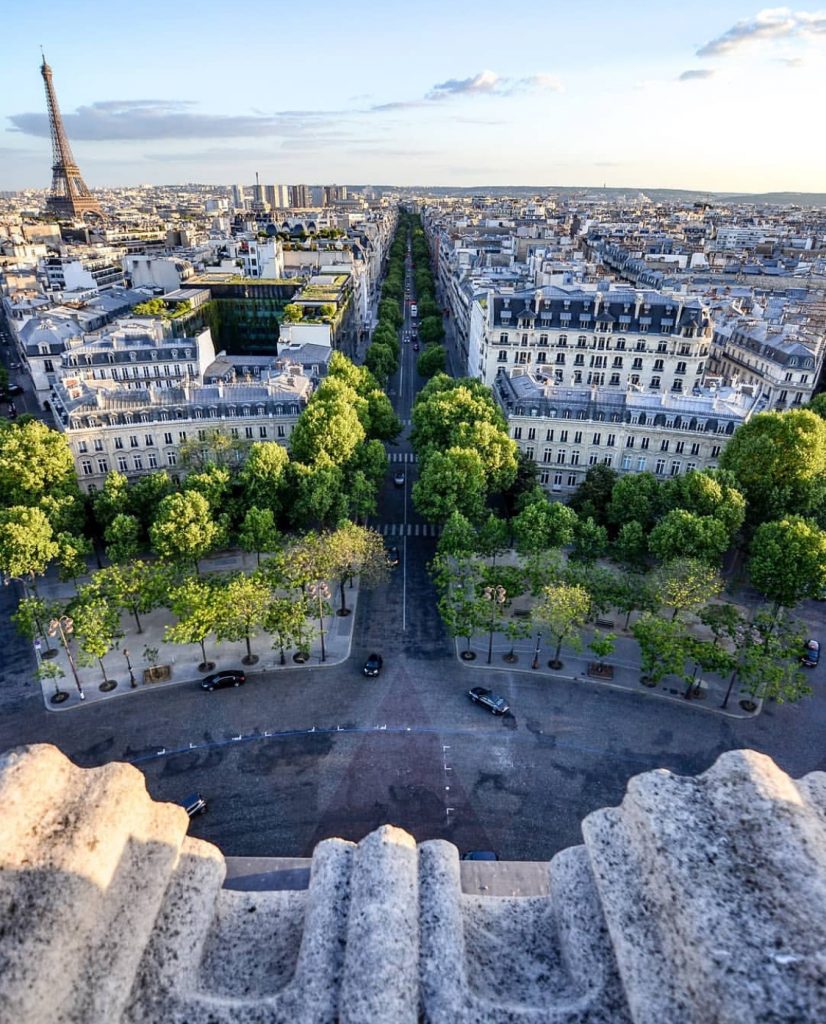
We continued our climb up the stairs to the viewing platform on top of the arch and were caught off guard by the breathtaking views. Looking down from the top, we could see the maze of avenues extending out from the arch which resembled a web of concrete and steel. Mesmerized by the lights along the Champs-Elysees we slowly walked the perimeter of the top where we located the Eiffel Tower, the Louvre and the Sacre Coeur.
Although construction on the arch began in 1806, Napoleon Bonaparte would never have the opportunity to enjoy his trophy which took thirty years to complete. While his funeral was conducted at the base of the arch in 1921, Napoleon’s triumphal project was finally completed in 1936.
What to See and What to Do:
Arc de Triomphe
Place Charles de Gaulle
75008, Paris, France
Telephone: +33 155 377 377
- Admission Fee: Free, but there is an additional cost to visit the rooftop observation deck for 9,50 Euros for adults and free for visitors 18 years and under. From October to March, the first Sunday of each month is free.
- Hours: Open daily from 10AM to 11:30PM October to March and open daily from 10AM to 11PM April to September. The last entry is scheduled 45 minutes prior to the museum’s closing.
- Amenities: Museum, gift shop, self guided tour brochure available in 8 languages and 90-minute tour lectures provided in French, English and Spanish
- Scenic View: Gorgeous views from the rooftop
- Length of Visit: 1 – 2 hours
- Tips for Your Visit: The museum and observation deck is included in the Paris Pass. Do not cross the traffic to reach the Arc de Triomphe! Attempting to cross the roundabout is potentially dangerous. From the northern side of the Champs-Elysees are stairs that lead to pedestrian tunnels bringing you beneath the arch. You should be moderately fit to be able to take the stairs to the top and wear appropriate shoes. The best time to visit the rooftop is during sunset.
Where to Stay:
Four Seasons Hotel George V Paris
31 Avenue George V
75008, Paris, France
Telephone: +33 49 52 70 00
Where to Eat:
Le Cinq
Four Seasons Hotel George V Paris
31 Avenue George V
75008, Paris, France
Telephone: +33 49 52 71 54
Wow! I experienced two amazing dinners over the last couple of days and Le Cinq will forever be considered one of my top three restaurants! I ordered the Sea Bass with cavier and ribot milk that was so creamy and prepared with perfection! David ordered the Australian Black Market Beef draped with truffled mozzarella and the meat was so tender and I wished we could have ordered another side of truffled mozzarella. Ingenious!
What to Eat:
- Beef Borgonion is France’s equivalent to a beef stew but better!
- Fresh Bread from the Boulangerie
- Cheese
- Chocolate Croissants
- Coq au Vin is an extraordinary French chicken stew
- Creme Brulee is an egg custard that has been torched on the top to create a crisp layer
- Crepes are an egg based wrap filled sweet or savory fillings
- Croque Monsieur or Croque Madame are croissants filled with sweet or savory fillings such as cheese or ham.
- Duck which is listed as canard on the French menu
- Escargot
- French Onion Soup
- Frites are France’s fancy French fries
- Frog Legs
- Frois Gras is a duck pate
- Macarons are deliciously light airy pastries made from sugar and almond flour
- Meringues
- Profiteroles are cream puffs
What to Read:
- The Hunchback of Notre Dame, by Victor Hugo
- The Sun Also Rises, Ernest Hemingway
- Les Miserable, by Victor Hugo
- The Life Before Us, by Romain Gary
- All the Light we cannot see, by Anthony Doerr
- Suite Francaise by Irene Nemirovsky
- Perfume by Patrick Suskind
Photo Guide for Paris:
- Avenue des Champs Elysses for street scenes and upscale restaurants and hotels
- Eiffel Tower for fabulous views of the city
- Galeries Lafayette Haussmann for gorgeous architecture
- Jardin du Luxembourg for nature
- The Louvre for art and architecture
- Montemartre for the art scene and architecture
- Notre Dame Cathedral for amazing views
- Paris Bird and Flower Market for interesting people watching
- Paris Metro for street scenes
- Sacre Coeur for sunsets and panoramic views
- Saint Michel and the Latin Quarter for street scenes
